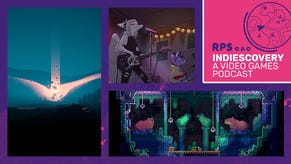Animal Well review: an unmissable creature feature
Putting the animal in AI
Computers have always been animal wells, in a sense. They're havens for creatures of many shapes and degrees of literalness, all the way down to the metal. As in ecologies at large, the most abundant and widespread are probably the bugs, beginning with the moth that flew into that Harvard Mark II in 1947 and ending with the teeming contents of the average free-to-play changelog. A little further up the food chain we find "worms", like the Creeper that once invaded the ARPANET, and "gophers", a directory/client system written in 1991 for the University of Minnesota. There are computer animals spawned by branding - foxes of fire and twittering birds and the anonymous beasts that haunt the margins of Google documents. There are computer animals that are implied by the verbs we use in computing - take "browser", derived from the old French word for nibbling at buds and sprouts, which suggests that all modern internet searches are innately herbivorous.
Billy Basso's Animal Well feels like a celebration of all these unreal organisms, of their whimsy and uncanniness and persistence between layers of technological change, and of the more explicit, quasi-Jungian animal figures and symbols we find in videogames from Zelda to Fallout. Not to bury the lede under fancy parallels here, but it's also an absolutely brilliant metroidvania platformer, and a game that manages to be at once deeply intuitive and utterly, utterly mysterious.
In Animal Well you play one of the simplest, most adaptable and adorable forms of videogame wildlife - a small, squishy ball with titchy limbs and perpetually surprised eyes, a lesser-known species of Kirby but without Kirby's big mouth. You're dropped without preamble into a sepulchral yet thriving 2D cave system of dripping pixels, swinging blue lanterns, and countless, imposing statues.
Your initial goal is to gather certain things from the map's four corners, saving your progress at the old-timey dialphones that dot the world and which, together with the floppy disc icons for saving, anchor this project as a love letter to the pre-broadband era. Doing this takes you into the realm of different clusters of animals, some helpful and some hostile, with traits and behaviours that plug into elegant single-screen platform puzzles involving doors, pulleys, switches and buttons. Along the way, you'll find tools - although "tool" feels like the wrong word for something like a frisbee or a bubble wand - which are both straightforwardly applicable to the nearest obstacles and rich with more elaborate uses you'll discover when you revisit areas an hour or so later.
Finding the initial four of these curious toys is, I think, necessary to gather each of the Things you'll need to reach the credits, so you can expect a fair bit of the usual metroidvania backtracking after running into an impassable barrier. There's no checkpointing, either, so you'll often have to trudge back a few screens from a saveroom after tumbling your emoji-wanderer into a spike pit or a cloud of seething purple faces.
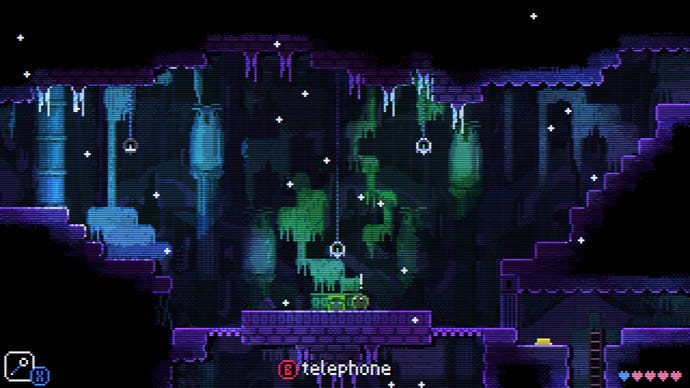
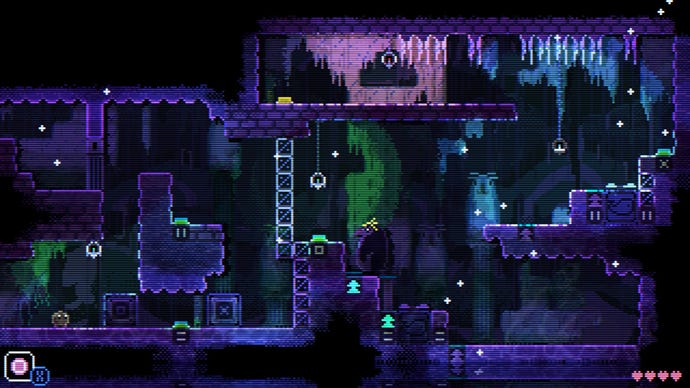
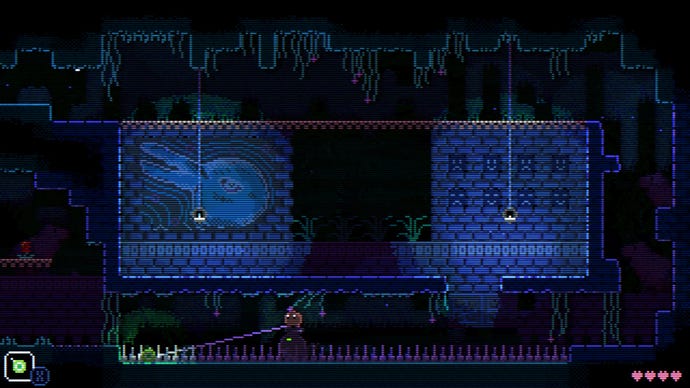
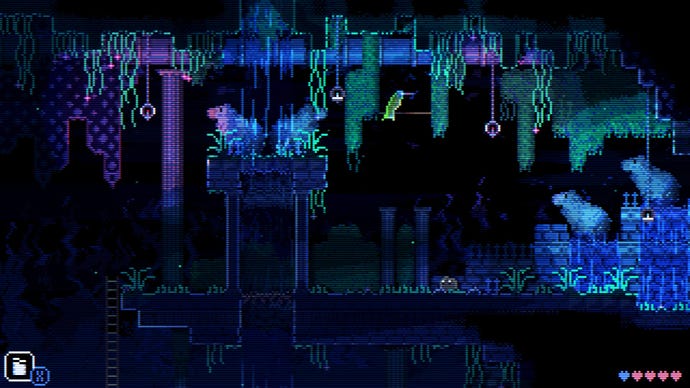
Animal Well has more friction than you might expect from a game without combat or killing, then. The more advanced puzzles require you to think beyond the bounds of a single screen, considering how the machinery might join up across a biome, and it's while solving these more dispersed areas that you're most at risk of coming a cropper and having to retrace your steps. But Animal Well stops well short of being a grind. Health-restoring fruits are generally just a few jumps away, and while there are terrain hazards, above all shadowy labyrinthine chambers in which you're hunted by something reminiscent of Pac-Man, you'll never take damage from falling into water - a game-making concession in a world that puts me heavily in mind of Sonic's Labyrinth Zone. And then there's the all-important question of your jump, which is note-perfect whether you're precision hopping between dangerous surfaces, button-mashing your way up a laddered chasm or performing a leap of faith into what you're hoping is a hidden chamber (of which there are dozens).
Beyond these broad strokes, I fear to spoil, because Animal Well does such an amazing job of teaching you things and ushering you towards other things without resorting to text. It's this wordlessness, of course, that makes it such a mystery, one that may occupy you for considerably longer than the 5-10 hours it takes to complete the initial run.
There are more obvious prompts and cues - a squirrel who is always fleeing off-screen, gargoyles whose eyes light up under certain conditions, and above all, the irresistible pull of the next puzzle. But there are other sights and sounds that take awhile to dawn on you, things you might want to circle back to after you've rolled the credits - which, according to publisher Bigmode, means you'll have seen around half of what Animal Well has to offer. Some of these late-game revelations put me in mind of Polytron's Fez. Among the things you can discover is a pencil you can use to scribble on the game's map, and suffice to say that this is a game in which you might wish to take notes.
Again, I don't want to give too much away. But I can at least tell you a little more about the animals, who range from enormous geckos through absolutely nightmarish ostriches to inconveniently boisterous dogs. If the puzzles make me think of Fez, Animal Well's creatures recall Rain World, but there's no entangled predator-prey ecology here that chases you between screens, and much less raw Darwinism to your relationships with the other critters - though there are definitely a few who want to eat you.

These are openly videogame animals, rather than attempts at simulating a flesh-and-blood critter. They have many traits and foibles you might recognise from daily life, like the way a panting dog falls still when it senses something nearby, or the achingly slow movements of a starfish. But they have other capacities that reveal them for the descendants of other computerised creatures - the fauna and flora of Metroid and Oddworld and more recently, Amanita's Creaks and even Subnautica.
They form a spectrum of naturalism into daydream. Some creatures are little more than animalised platform game fixtures, like the spectral mice heads that roll vertically and horizontally. Others are little animated portraits, like the vast capybara you see lounging in the background. A few of these animals have more complex behaviours that suggest a life beyond their function for the player, but most are obviously mechanical, and yet somehow endearing.
How should we feel about them? Mixed, I guess. Pleasantly on-edge, perhaps. Playing Animal Well reminded me strongly of John Berger's old 1977 essay "Why Look At Animals?", in which he argues that animals have been excluded from the lives of humans under capitalism in proportion to how imagery of animals has become widespread and commercialised. There is no way of recovering what Berger styles an ancient, totemic companionship between humans and animals because our methods of observation, representation and circulation are always hiding animals from view. "They are the objects of our ever-extending knowledge," he writes. "What we know about them is an index of our power, and thus an index of what separates us from them. The more we know, the further away they are."
I have no idea what Berger would make of Animal Well, or of representations of animals in videogames at large, but Basso's game feels like a gentle, cyberpunky rebuttal of his conclusions. It takes the idea that animal images have excluded animals as its premise, and explores how our technologies of knowledge-making and representation may have become animalistic in response. Above all, the game's confusing, hybrid creatureliness comes across in how these animals sound. Sometimes they cry out like beasts that are turning into software, with moans and yaps and howls and hisses that appear to have been relentlessly resampled and distorted. And sometimes, they cry out like software that has grown bestial and unruly for being left too long underground.
This review is based on a copy of the game provided by the developer.




